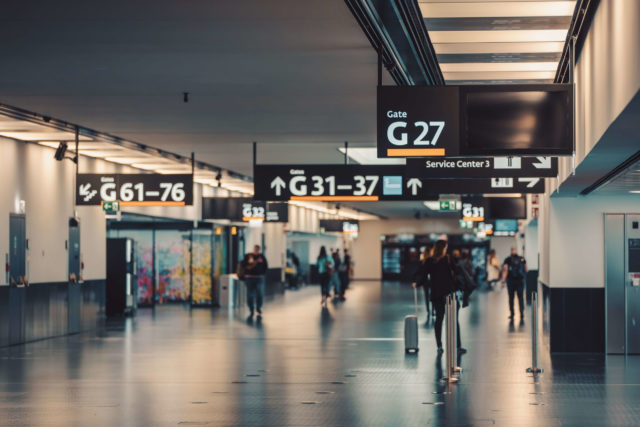Airports are bustling hubs that handle millions of passengers every day. Efficiently managing the flow of passengers through the terminal is crucial for a seamless travel experience. With the advent of artificial intelligence (AI), airports worldwide are harnessing its power to optimize passenger flow management. By leveraging AI technologies, airports can streamline processes, reduce wait times, enhance security, and ultimately provide a more enjoyable journey for travelers. Intelligent Queue Management: One of the most significant challenges at airports is managing queues at various checkpoints, such as security screening and passport control. AI-powered systems analyze real-time data, including passenger volume and wait times, to optimize queue management. By predicting and preventing congestion points, airports can dynamically allocate resources, deploy staff efficiently, and reduce overall wait times.
How can AI help manage passenger flows at airports?
Intelligent Security Screening:
Traditional security screening procedures can be time-consuming and often lead to bottlenecks. AI algorithms are revolutionizing this aspect by automating threat detection processes. Advanced imaging technologies, such as millimeter-wave scanners and X-ray systems, powered by AI, can quickly identify potential threats and anomalies in baggage and personal belongings. This allows for more efficient and accurate screening, reducing the need for manual inspections and expediting the overall security process.
Predictive Analytics for Resource Planning:
AI-driven predictive analytics enables airports to forecast passenger flows and anticipate peak periods accurately. By analyzing historical and real-time data, including flight schedules, weather conditions, and passenger behavior patterns, airports can optimize resource planning. This includes staffing levels, gate assignments, and baggage handling capacities. By proactively managing resources, airports can ensure smooth operations, minimize delays, and improve the overall travel experience.
Intelligent Wayfinding and Customer Assistance:
Navigating through large airports can be overwhelming, especially for first-time travelers. AI-powered wayfinding systems, integrated with digital signage and mobile applications, can provide real-time directions and personalized guidance to passengers. These systems can dynamically adapt to changing circumstances, such as gate changes or delays, ensuring passengers reach their destinations efficiently. Furthermore, AI-enabled chatbots and virtual assistants offer instant customer assistance, answering queries and providing information on flights, amenities, and services, further enhancing passenger satisfaction.

Real-Time Baggage Tracking:
Lost or mishandled baggage is a major concern for travelers. AI-based baggage tracking systems leverage sensors, RFID tags, and machine learning algorithms to monitor and track luggage in real-time. Passengers can receive instant updates on their mobile devices, enabling them to stay informed about their baggage’s location throughout the journey. This not only reduces stress and anxiety but also enables airports to efficiently locate and deliver misplaced bags, improving customer satisfaction.
The role of automatic counting and AI in passenger flow management
AI and automatic people counting systems can play a crucial role in managing passenger flows at airports. By accurately tracking and analysing people movements, these systems provide valuable data that can help airport authorities make informed decisions and improve overall operational efficiency.
Real-time surveillance:
AI-powered cameras and sensors can be strategically placed around the airport to monitor passenger movements in real time. These systems use computer vision algorithms to detect and track people entering, exiting and moving through different areas of the airport.
Crowd management:
By constantly monitoring passenger flows, AI algorithms can identify crowded areas and predict potential bottlenecks. This information allows airport staff to proactively manage crowds by reallocating resources, adapting security checkpoints or opening additional lanes to avoid congestion and long queues.
Queue management:
Automatic people counting systems can accurately measure the length of queues and waiting times at various control points, such as security checks, check-in counters and immigration. This data enables airport authorities to allocate staff and resources efficiently, ensuring a smoother flow of passengers and reducing waiting times.

Improved security:
AI-powered people counting systems can also be integrated with security systems to detect and alert security personnel to suspicious behaviour or unauthorised access to restricted areas. This additional layer of security helps airports maintain a safe and secure environment.
Predictive analytics:
AI algorithms can analyse historical data to identify patterns and trends in passenger flows, enabling airports to predict future demand and plan resources accordingly. This optimises staffing, minimises operational costs and improves overall efficiency.
Improved passenger experience:
By leveraging AI and people counting technology, airports can gain valuable insights into passenger behaviour, such as preferred routes, waiting times and points of interest. This information can be used to improve the passenger experience by optimising wayfinding, commercial offers and providing targeted services based on individual preferences.
For more information click here
